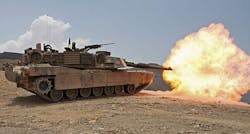2017 DOD budget to roll out next week: has Pentagon spending finally bottomed out?
THE MIL & AERO COMMENTARY, 2 Feb. 2016. The U.S. Department of Defense (DOD) 2017 budget request will be rolled out one week from today, and already there are signs of optimism -- not for major DOD budget increases, but at least minor increases here and there, and perhaps no bloodletting-type cuts.
With cautious optimism -- and with lots of hard knocks behind us, and with a presidential election in nine months-- do we dare ask: has the DOD budget finally bottomed-out?
U.S. Defense Secretary Ashton Carter previewed the 2017 DOD budget today in Washington, and outlined some of the Pentagon's national defense priorities for next year. Federal fiscal year 2017 begins next October 1.
The DOD budget that will be released on Tuesday 9 Feb. will ask Congress for $582.7 billion. That's up from the $580 that Congress allocated to the military this year.
The fiscal 2017 DOD budget, however, would be a slight decrease from the $585.2 billion 2016 DOD budget request. These figures combine request for discretionary spending, such as procurement, research, and operations, as well as for so-called overseas contingency operations for military operations in Iraq, Afghanistan, and other areas that involve the global war on terrorism.
The 2017 DOD budget request also will contain $71.4 billion for military research, development, test, and evaluation (RDT&E), which would be up slightly from the $70 billion DOD RDT&E budget request for this year.
Five evolving challenges drive DOD planning for next year, Carter said today at the Economic Club of Washington. The five core military challenges are Russian aggression in Europe; the rise of China in the Asia Pacific; North Korea; Iran; and the ongoing fight against terrorism -- especially fighting ISIS, for which DOD is requesting $7.5 billion for weapons like GPS-guided smart bombs and laser-guided rockets.
Pentagon research initiatives next year will include advanced navigation, swarming autonomous vehicles, self-driving networked boats, gun-based missile defense, and an arsenal plane that turns one of the military's older planes into a flying launch pad for a range of conventional payloads.
Related: First look: fiscal 2015 DOD budget hits procurement and research hard
New naval capabilities in surface warfare and anti-submarine warfare also are among the Pentagon's top priorities for next year. The upcoming DOD budget request will include $8.1 billion for undersea capabilities.
Over the next five years, Carter says, top military leaders want to spend $40 billion for advanced payloads and munitions; unmanned underwater vehicles; advanced maritime patrol aircraft; and nine of the most advanced Virginia-class attack submarines, some of which will be equipped with the Virginia Payload Module, which increases the platform’s strike capacity from 12 Tomahawk missiles to 40.
Also topping the list are cyber security and cyber warfare, for which the Pentagon for ask for $7 billion in 2017. This money would help improve DOD network defenses, develop cyber tools and infrastructure and provide offensive cyber options.
In addition, Pentagon leaders want to use money next to develop hyper-velocity smart projectiles for the future electromagnetic rail gun, as well as for the Army’s Paladin self-propelled howitzer and the 5-inch guns on Navy destroyers.


